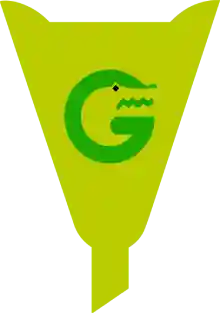
WordPress is Frontend Function – Explained in Simple Words
If you've ever used or heard about WordPress, you probably know it's a popular platform for building websites. But here’s a question many beginners ask: “Is WordPress frontend or backend?” While WordPress does both, today we’ll dive into the idea that WordPress is a frontend function—at least, from how your website visitors see it.
Let’s break this down in the most human-friendly way possible.
💡 What Does "Frontend" Even Mean?
Imagine you walk into a restaurant. You’re greeted by a waiter, given a menu, and eventually served your meal. This whole experience—the part you can see and interact with—is like the frontend of a website.
Now think of the kitchen—the behind-the-scenes chaos where the real cooking happens. That’s the backend.
So when we say “WordPress is a frontend function,” we’re focusing on what your visitors actually see and use on your website. This includes:
Design and layout
Navigation menus
Blog posts and pages
Images and videos
Contact forms
Buttons and links
All these things make up the frontend of a WordPress website.
🧠 Why is WordPress Considered Frontend?
Here’s a story that might help...
A friend of mine wanted to start a small bakery business. She wasn’t a developer—just someone with a dream and a killer brownie recipe. She found WordPress and within a few hours, had a clean, beautiful website up and running. No coding, no confusion. Just drag, drop, and type.
What she created—the website her customers see—is the frontend. And that’s what WordPress makes so easy for everyone.
🧱 How Does WordPress Power the Frontend?
Here’s a step-by-step guide to understand how WordPress handles the frontend of your website:
1. Choose a Theme
Your WordPress theme controls the overall look and feel of your website. Think of it as the outfit your site wears.
👉 Try free themes from the WordPress Theme Directory or premium ones from ThemeForest.
Frontend Function: The theme decides the layout of posts, colors, fonts, headers, and footers.
2. Add Pages and Posts
These are the core of your content. Pages are like your Home, About, or Contact pages. Posts are for blogs and news updates.
Frontend Function: Your readers see your posts and pages when they visit your site.
3. Use Page Builders
Tools like Elementor or Beaver Builder let you build web pages with drag-and-drop functionality.
Frontend Function: You build visually, exactly how users will see it.
4. Add Widgets and Menus
Widgets let you add things like calendars, recent posts, or search bars. Menus help with navigation.
Frontend Function: They guide your visitors around your site, making the experience smoother.
🔍 Why Does It Matter for You?
If you’re a business owner, blogger, or freelancer, you probably care about one thing: How does your website look to customers?
That’s where WordPress frontend shines:
Fast and visual changes – See your edits in real-time.
No coding required – Anyone can do it.
Mobile-friendly themes – Look great on all devices.
Plugins for customization – Easily add contact forms, sliders, galleries, etc.
With WordPress handling your frontend, you can focus more on your content and brand, and less on tech headaches.
🌐 Important Frontend Features WordPress Supports

🛠️ Frontend vs Backend in WordPress: What’s the Difference?
Let’s make it simple.

🛍️ Ready to Build? Here’s Why You Should Start with WordPress
Whether you're launching a blog, an eCommerce store, or a portfolio, WordPress frontend functions give you everything you need:
User-friendly editing with visual builders
Real-time updates to test new looks
Seamless integrations with tools like Mailchimp, Stripe, and WooCommerce
Confidence to publish, knowing your site looks professional
If you’ve ever struggled with confusing website platforms or paid too much for a developer to “make small changes,” WordPress is your new best friend.
It’s the most beginner-friendly way to get your ideas online fast and look good doing it.
🔗 Final Thoughts: WordPress Frontend Empowers You
Let’s be clear: WordPress is more than just a blog tool. It’s a full-on frontend builder that puts power back in your hands.
Want to change your site’s color scheme? One click.
Want to launch a blog post? Done in minutes.
Want to create a landing page for your business? No problem.
Thanks to WordPress frontend functions, you don’t need to be a developer. You just need a vision.
So, are you ready to take control of your website without writing a single line of code?
👉 Get started with WordPress today and build something beautiful.


